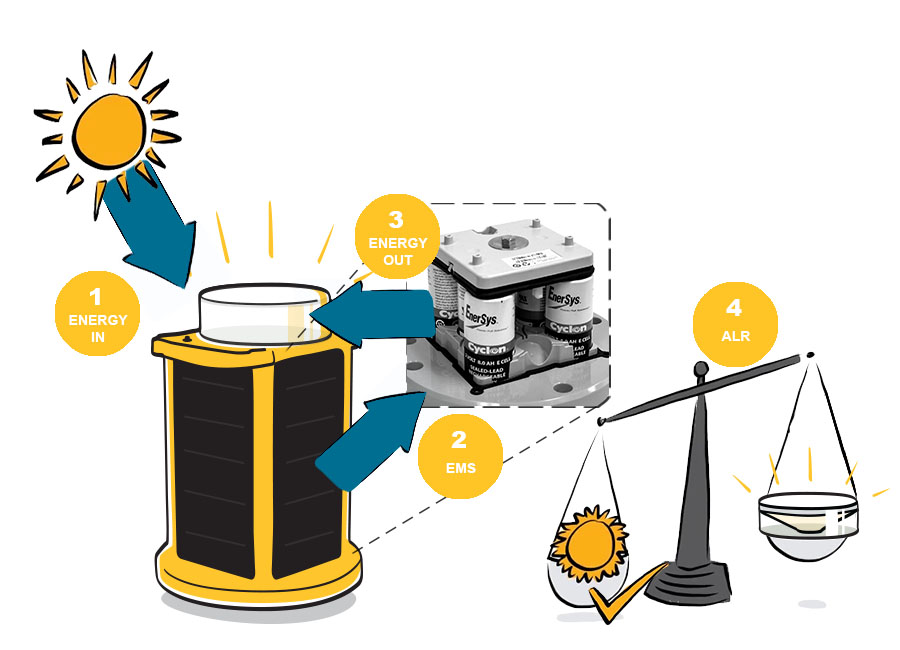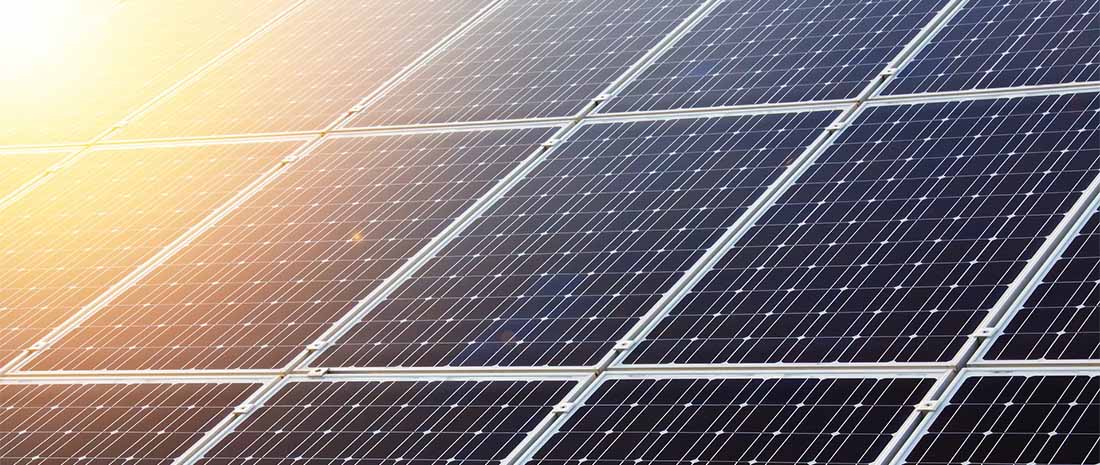How Solar Airfield Lights and Solar Obstruction Lights Work
Our solar lights are self-contained, meaning the solar panels, batteries and LEDs are built into a single enclosure. This compact design simplifies the installation process—just mount the light and configure it to turn on at night, and it’s ready to go.
So how does a solar airfield light or solar obstruction light work?
Our solar lights and markers are comprised of four key components: solar panels, batteries, LEDs and an intelligent energy management system. These components work together to generate electricity during the day to power the light at night.
During the day, the solar panels convert the sun’s energy into electricity which charges the batteries—this is called “energy in.” At night, the batteries power the LEDs, producing light for the airfield—this is called “energy out.” Overseeing this process is our intelligent energy management system (or EMS for short). The EMS regulates the flow of energy from the solar panels to the batteries and from the batteries to the LEDs, ensuring the process is as efficient as possible. Thanks to our unique EMS design, we can build our runway lights and markers smaller than the competition, while still meeting light intensity requirements.

1
ENERGY IN
Even when it’s cloudy during the day, the sun’s energy generates power. When sunlight hits the solar panel, it excites the electrons within, which can only move in one direction. This creates a DC current that flows into the battery.
Did you know? We conduct a solar site assessment to ensure the system will perform during those winter months as well as every other day of the year.
2
ENERGY MANAGEMENT SYSTEM (EMS)
Batteries store power with enough backup for even the darkest months of the year.
Flash Technology’s highly efficient energy management system (EMS) ensures the right amount of solar energy keeps the batteries charged and controls the light output of the LEDs.
3
ENERGY OUT
Batteries power the LED light and the energy management system (EMS), ensuring the light shines and/or flashes at the required level throughout the night.
4
ARRAY TO LOAD RATIO (ALR)
A properly sized solar light has a higher ENERGY IN than ENERGY OUT so that the system converts more of the sun’s energy into electricity than it consumes to power the light. This is called the array-to-load ratio, or ALR.
If ENERGY OUT is higher than ENERGY IN, the system won’t work consistently because it’s consuming more electricity to operate than it creates. It might run a few days before dying.

